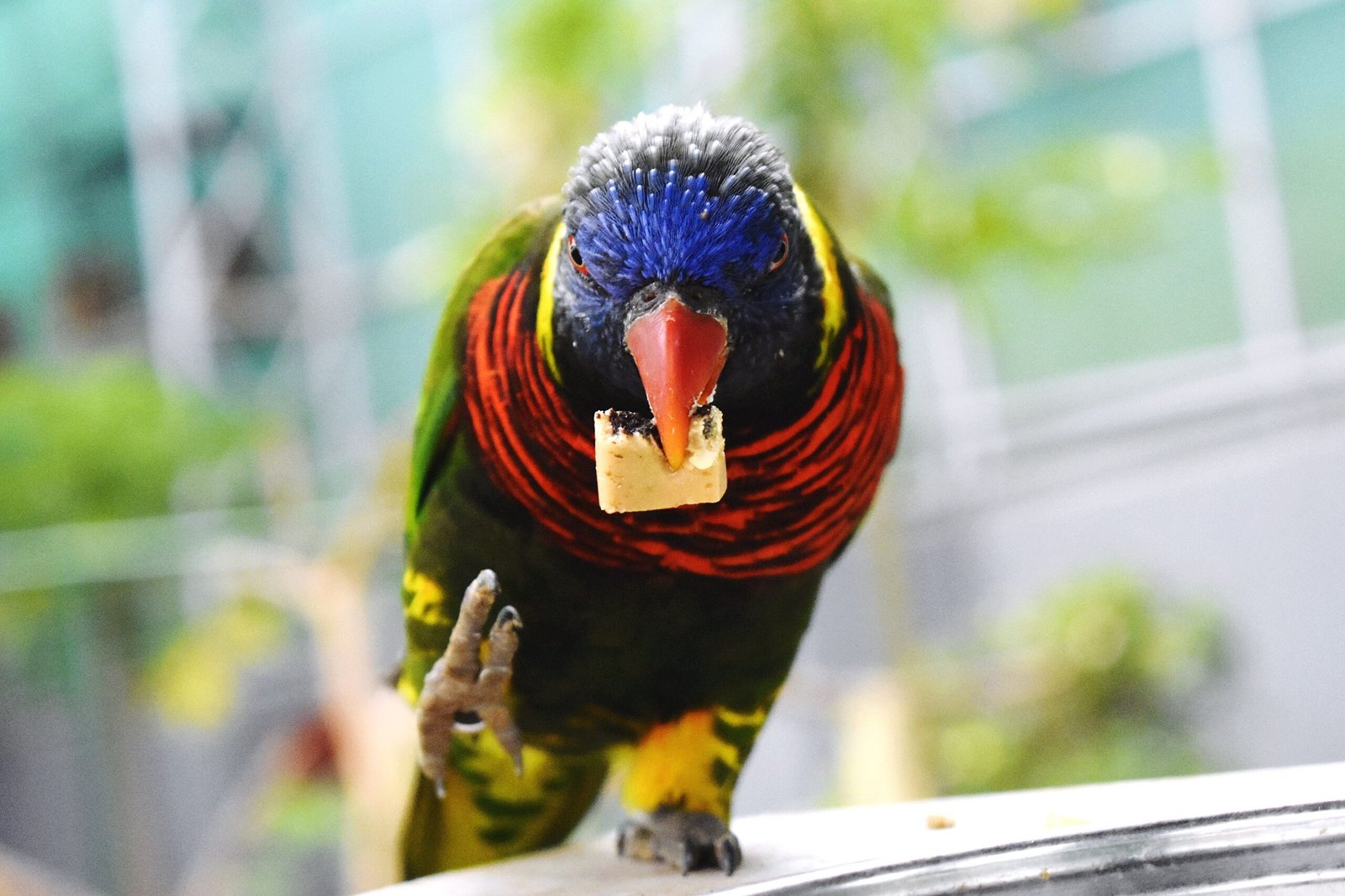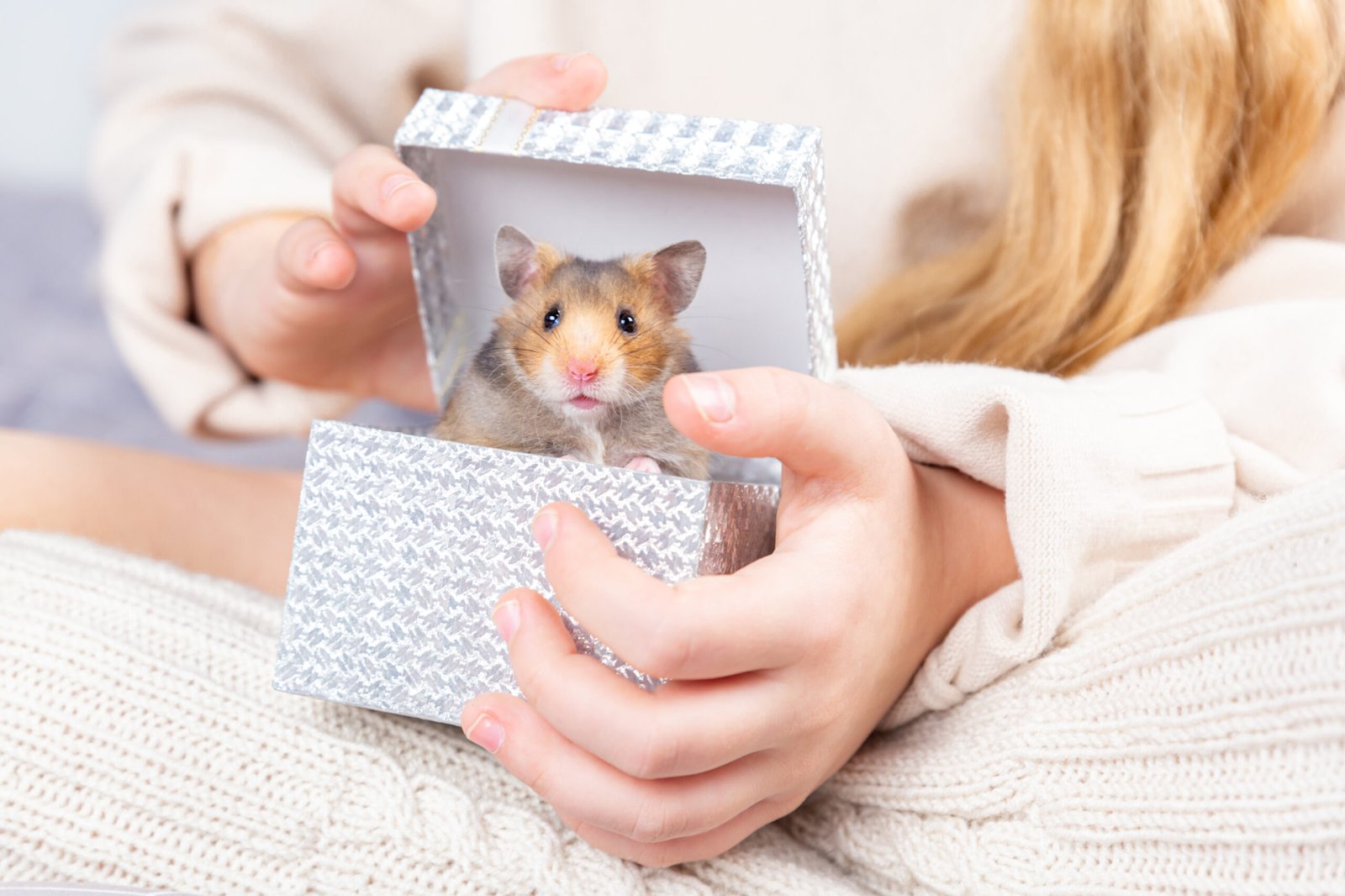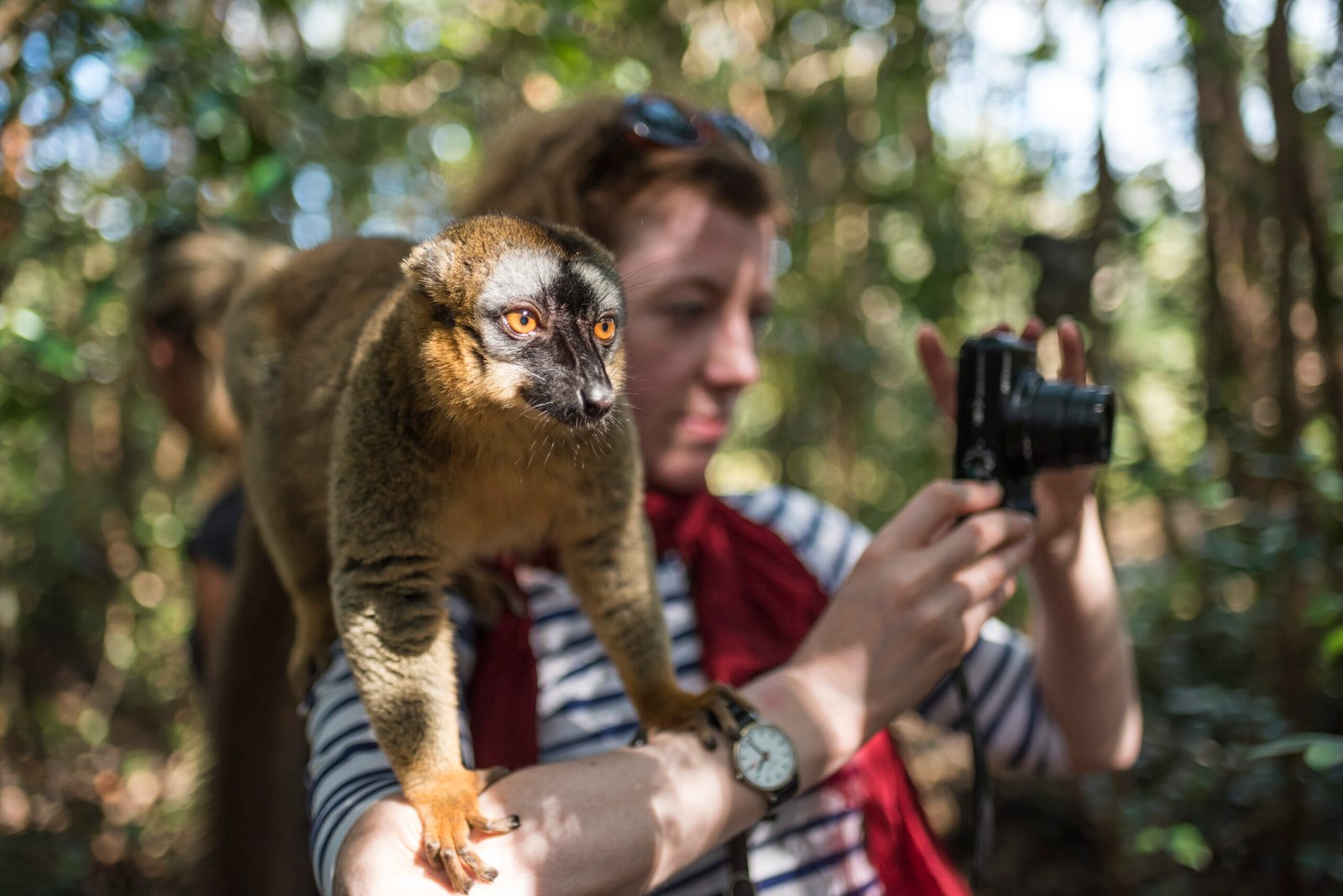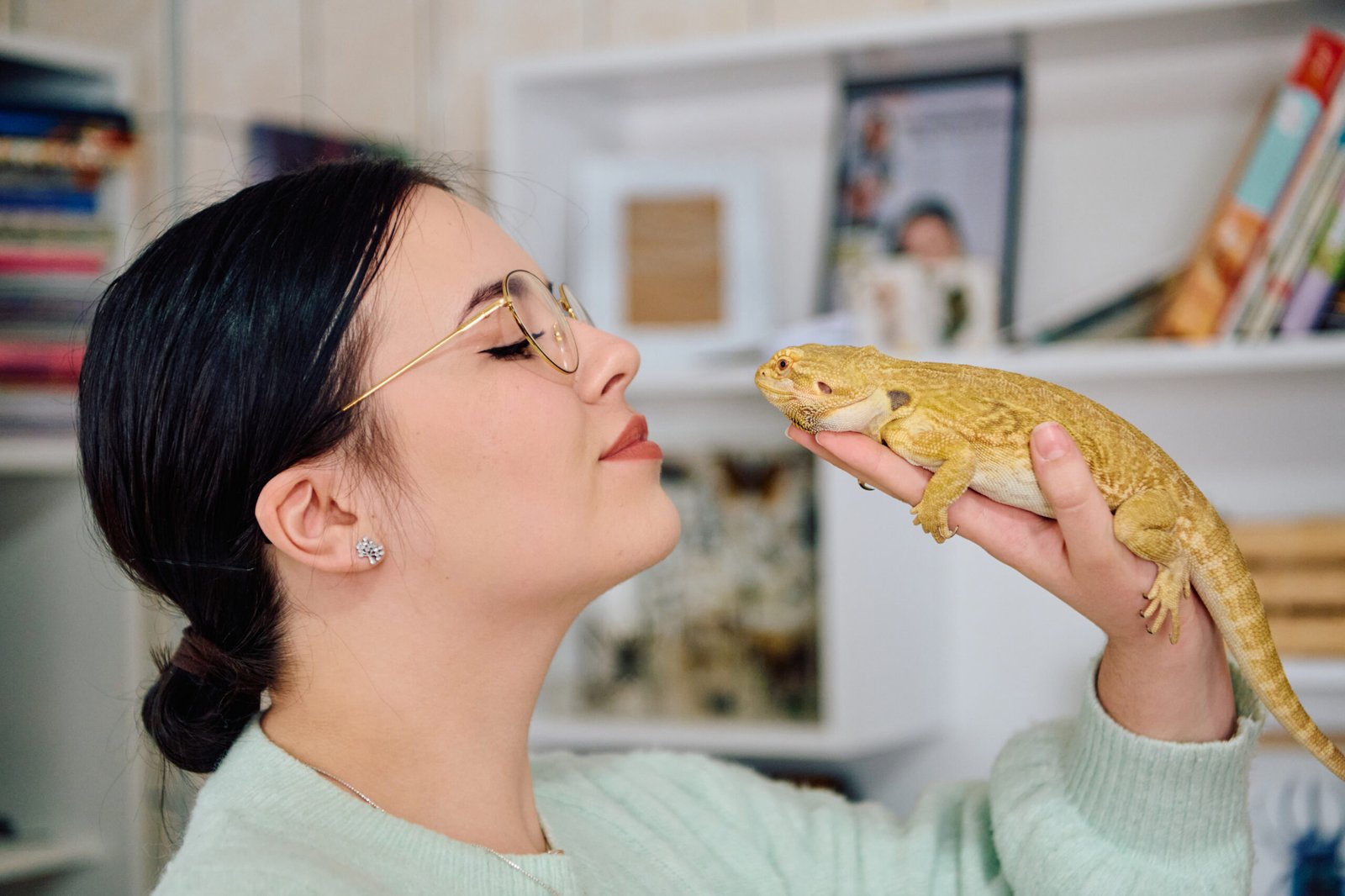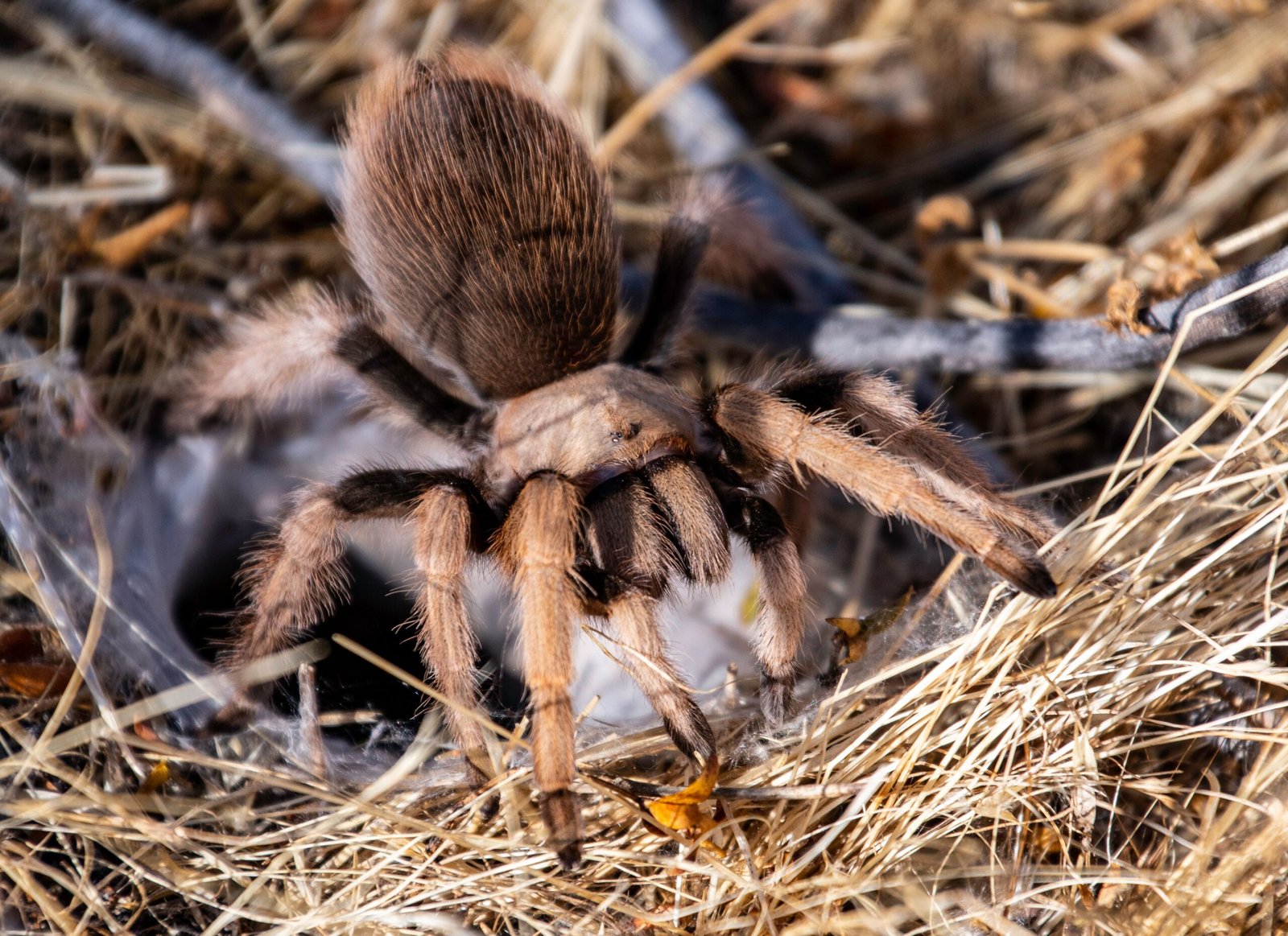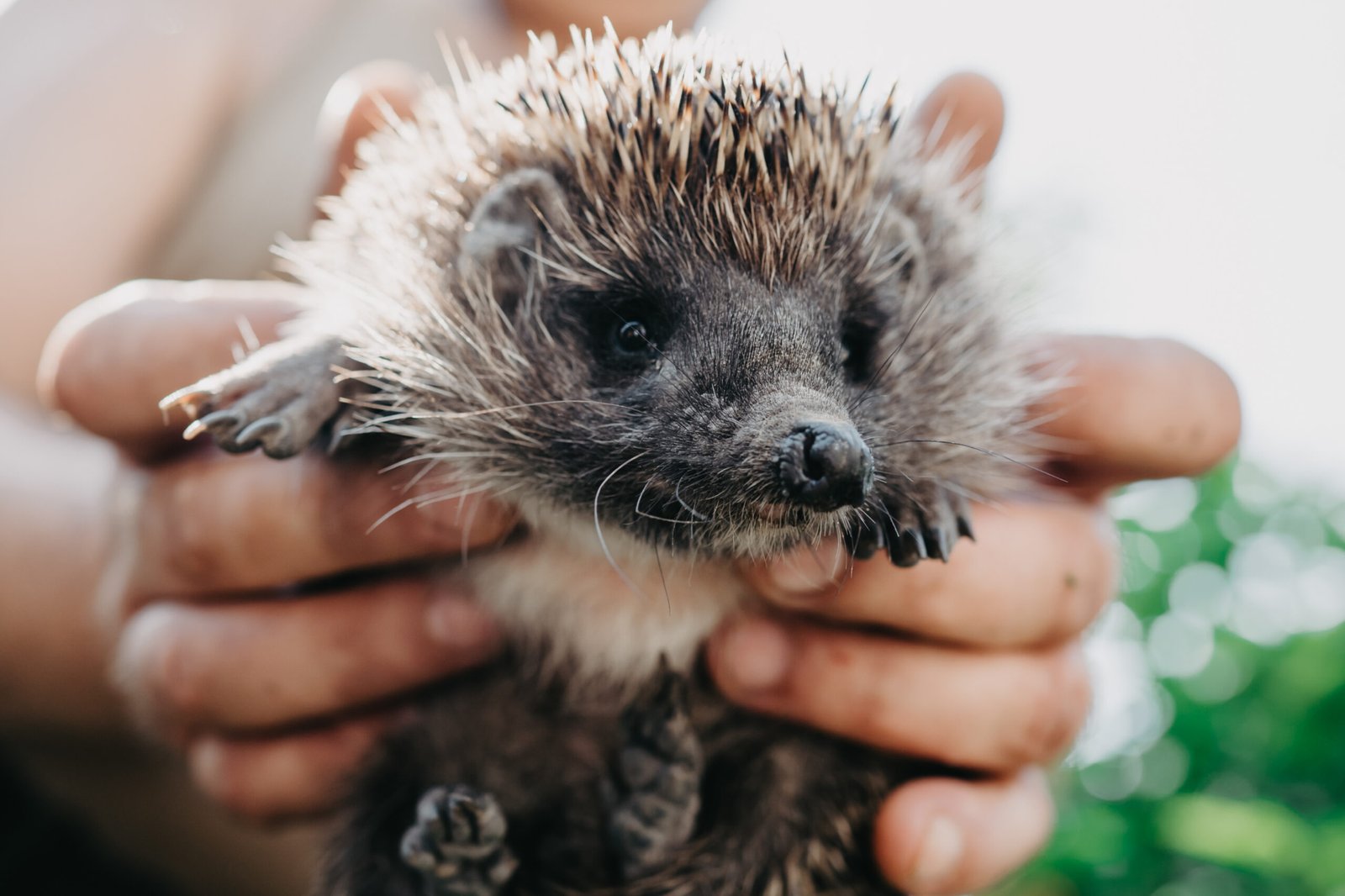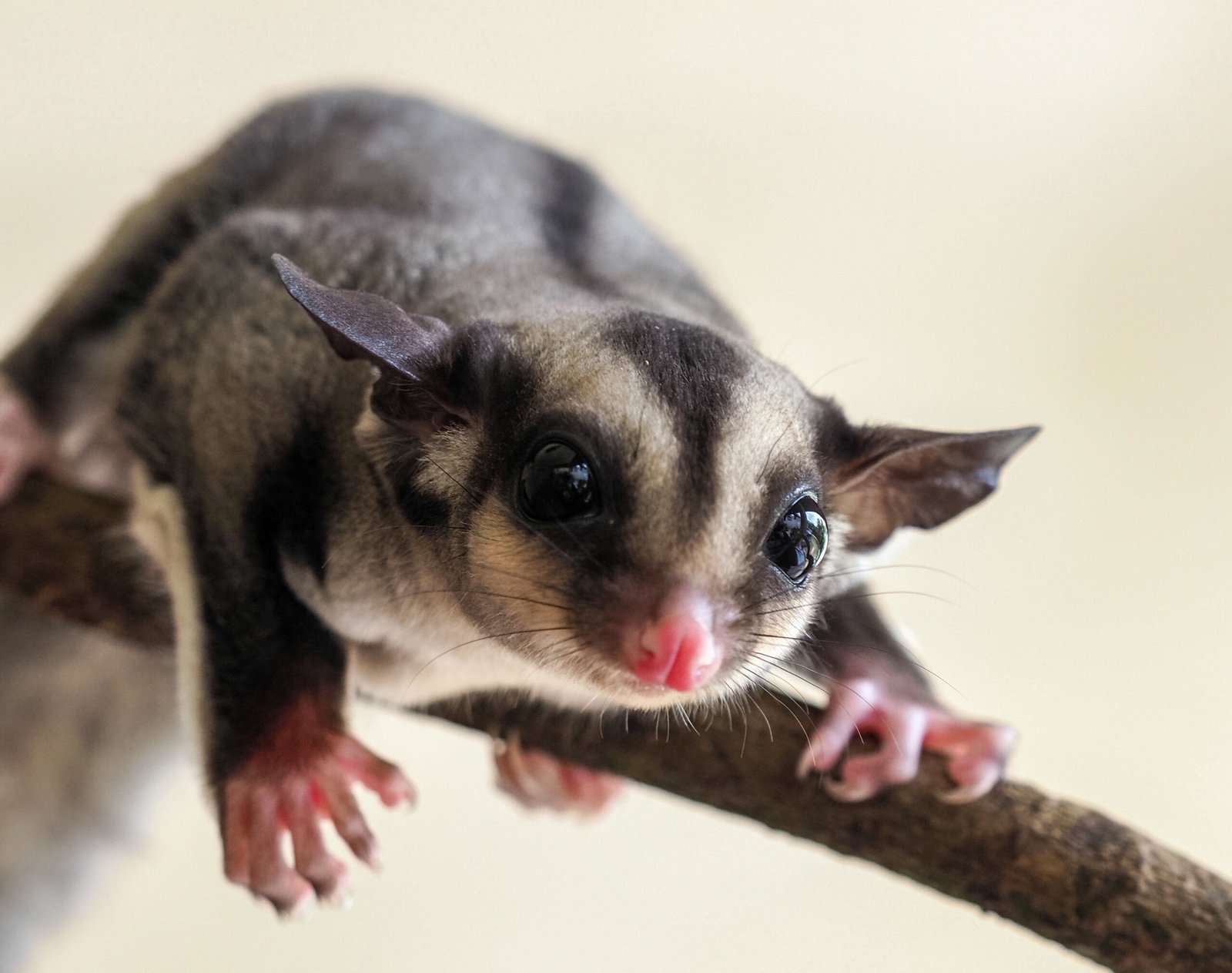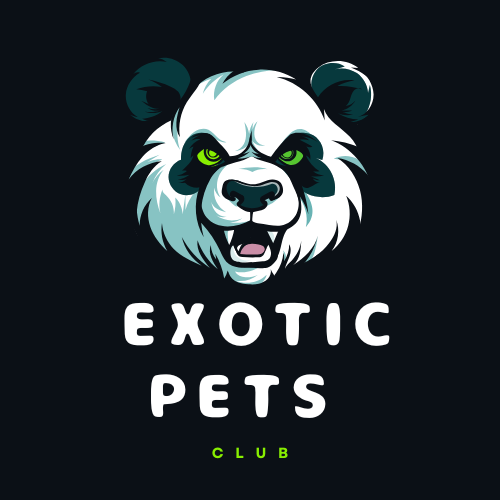Creating a safe habitat for your exotic animals is crucial to ensuring they thrive and live healthily in captivity. Many exotic pets require specific environmental conditions that mimic their natural habitats, which can be challenging to replicate. However, with thoughtful planning and understanding of their unique needs, setting up an appropriate and stimulating environment is achievable. This ultimate guide offers comprehensive insights into the essential steps and considerations for creating a safe and welcoming habitat for your exotic animal companions.
Creating an Ideal Habitat for Your Exotic Pet
Research is paramount when designing an ideal habitat for your exotic pet. Each species has unique environmental needs based on their natural ecosystem. By researching these needs, you can tailor your pet’s environment to meet their physical and mental well-being requirements. The process involves understanding their space, temperature, humidity, and lighting needs. Enclosures should be spacious to allow for natural behaviors and movements, reducing stress and promoting health. Furthermore, regularly monitored temperature and humidity control join natural substrates, furnishings, and enrichment items as key components in maintaining a stimulating ecosystem for your exotic pet.
– Research specific species needs such as their natural environment and behaviors.
– Ensure enclosures are spacious for movement and natural behaviors.
– Maintain optimal temperature, humidity, and lighting conditions.
– Incorporate substrates and enrichment items for mental and physical stimulation.
– Regularly clean and monitor conditions for health and safety.
Research Your Pet’s Natural Habitat
Understanding your exotic pet’s natural habitat is vital for mimicking their natural surroundings in captivity. Start by identifying key environmental elements crucial for replicating their native conditions, such as temperature, humidity, light cycles, and terrain. Moreover, consider their natural diet and feeding habits, adjusting their nutrition accordingly for balance and enrichment. Social structures are equally important; some species thrive with companions, while others need solitude. Reliable information is key in this process, so seek accurate data from scientific articles, reputable websites, and expert advice, ensuring your efforts align with their natural lifestyle.
– Study the natural habitat features, including temperature, humidity, and light.
– Consider diet and social structures in planning habitat features.
– Utilize credible sources like research papers and expert discussions.
Choose the Right Enclosure
The enclosure you choose plays a crucial role in your exotic pet’s health and happiness by replicating their natural habitat. Size is an essential aspect to consider, as it should accommodate your pet comfortably and encourage natural behaviors. Strong and non-toxic materials are necessary to provide security and prevent escapes or health hazards. Proper ventilation and climate control are non-negotiable elements to ensure that your exotic animal’s specific environmental conditions are consistently maintained. Lastly, a regular regime of maintenance and cleaning safeguards against diseases, promoting a healthy habitat.
– Choose size-appropriate enclosures allowing natural behaviors.
– Use durable, safe materials for construction.
– Ensure ventilation and climate control.
– Maintain cleanliness to prevent disease.
Provide Proper Lighting and Temperature
The significance of appropriate lighting and temperature management cannot be overstressed in creating a healthy habitat for exotic animals. Adequate lighting replicates their natural environment, with UVB lights being critical for reptiles to facilitate calcium absorption and prevent diseases such as metabolic bone disease. Maintaining a balanced day-night cycle helps regulate their biological clock and contributes to their overall well-being. Heat sources necessitate careful implementation to prevent dangerous temperature fluctuations, requiring regular monitoring with thermostats and thermometers.
– Use adequate lighting and UVB lights for specific needs like calcium absorption.
– Maintain balanced day-night cycles to regulate biological clocks.
– Monitor temperature closely to prevent fluctuations.
Mimic Natural Substrates
Emulating the natural substrates of your exotic animal’s native habitat promotes comfort and encourages instinctual behaviors. Safety is paramount, so avoid toxic materials that could jeopardize health. Consider moisture and drainage needs equally, ensuring proper humidity maintenance without stagnation. Easy-to-clean substrates contribute to habitat hygiene and lower stress levels for pets and caregivers alike. Adding variety in textures and layers can stimulate exploration and natural instincts, enhancing mental and physical engagement for your exotic animals.
– Choose safe substrates devoid of toxins.
– Account for moisture and drainage to maintain humidity.
– Opt for easy-to-clean materials preserving hygiene.
– Provide varying textures for instinct stimulation.
Offer Hiding Places and Enrichment
Hiding places are essential in promoting a sense of security, reducing stress in exotic animals. Utilizing natural materials like rocks, logs, and live plants can recreate familiar surroundings. Equally important are enrichment items such as toys and puzzles, encouraging mental and physical activity. Regular rotation of these items maintains your pet’s interest and engagement, crucial for their well-being. Ensure hiding and enrichment areas suit each species’ size and specific requirements, fostering a nurturing environment conducive to comfort and growth.
– Incorporate natural elements for secure hiding spots.
– Use enrichment items like toys and puzzles for activity.
– Regularly update and rotate items to maintain interest.
– Tailor hiding places to each species’ size and needs.
Maintain a Clean and Healthy Habitat
Maintaining cleanliness in your exotic animal’s habitat is critical for their health and safety. Regular cleaning schedules help prevent harmful bacteria buildup and waste accumulation. Using safe, non-toxic cleaning agents protects both the animals and their environment. Ventilation and humidity control are vital for optimal air quality and comfort. Keep a vigilant eye out for mold or mildew, which pose significant health threats. Finally, periodic deep cleaning ensures areas usually missed are reached and maintained, preserving a healthy living space.
Common Exotic Pet Species and Their Habitat Needs
| Species | Enclosure Size | Temperature Range (°F) | Humidity Level | Lighting Requirements | Diet Considerations |
|---|---|---|---|---|---|
| Bearded Dragon | Minimum 40 gallons | 75-100°F (bask area) | 30-40% | UVB lighting for 10-12 hours daily | Insects, vegetables, commercial pellets |
| Ball Python | Minimum 20 gallons | 75-80°F (ambient), 90-95°F (bask area) | 50-60% | No UVB required, but light cycle needed | Rodents, occasional fruits |
| Green Iguana | Minimum 75 gallons | 75-90°F (bask area) | 70-80% | UVB lighting for 12-14 hours daily | Leafy greens, fruits, insects |
| African Grey Parrot | Minimum 36″x24″x48″ | 70-80°F | 40-60% | 12 hours of light, avoid direct sunlight | Pellets, fresh fruits, vegetables |
| Red-Eared Slider | Minimum 55 gallons | 75-85°F (basking area) | 50-70% | UVB lighting for 12-14 hours daily | Aquatic pellets, leafy greens, insects |
| Sugar Glider | Minimum 24″x24″x36″ | 75-85°F | 50-60% | 12 hours of light | Fruits, vegetables, high-protein foods |
| Chinchilla | Minimum 4 cubic feet | 60-70°F | 30-50% | Natural daylight cycle | Hay, pellets, occasional dried fruits |
| Ferret | Minimum 24″x36″x24″ | 60-80°F | 30-50% | Regular light cycle | High-quality ferret food, occasional treats |
– Ensure regular cleaning and sanitization.
– Use non-toxic cleaning agents.
– Maintain air quality with proper ventilation and humidity control.
– Regularly check for mold and mildew.
Seek Professional Advice
Securing professional advice ensures that your exotic pet’s habitat meets all specific needs and requirements for a healthy living environment. Experts provide crucial insights into customizing habitats, relating to nutrition, environmental conditions, and health care practices. These consultations prevent costly mistakes, offering peace of mind knowing your pets reside in a safe and compliant environment. Moreover, collaborative decisions with professionals ensure adherence to legal regulations and standards for exotic animal safety and care.
– Consult with experts for habitat customization.
– Gain guidance on nutrition and health care practices.
– Prevent mistakes through professional advice.
– Ensure legal compliance with expert collaboration.
Providing a Comfortable Home
To provide a comfortable home for your exotic animals, focus on replicating their natural habitat through diligent research and consideration. Choose enclosures that offer ample space, ease of access, and optimal ventilation. Adding enrichment items stimulates physical and mental activity, encouraging natural behaviors and reducing stress. Continually monitor key environmental factors and adjust them to suit growth and changing needs, ensuring consistent well-being and comfort for your exotic companions.
– Research natural environments for replication at home.
– Select spacious and ventilated enclosures.
– Incorporate enrichment to reduce stress and encourage behavior.
– Regularly update conditions for growth needs.
FAQs
1. What are the essential steps to creating a safe habitat for my exotic animals?
Creating a safe habitat involves thoroughly understanding the specific environmental needs of each species, such as temperature, humidity, and space requirements, to design enclosures that mimic their natural surroundings. Secure containment systems prevent escapes and protect from predators. Regular maintenance, cleanliness, and enrichment activities form the backbone of a healthy environment. Consulting exotic animal veterinarians ensures best practices and provides peace of mind.
– Research species-specific environmental needs.
– Design enclosures resembling natural habitats.
– Implement secure systems against escapes.
– Maintain routine cleaning and enrichment.
– Consult veterinarians for expert guidance.
2. How can I ensure that my exotic animal’s environment meets their specific needs?
Ensuring your exotic animal’s habitat meets their needs requires comprehensive research into temperature, humidity, and space requirements, alongside consulting with veterinarians or experts for customized advice. Use safe materials for comfort and security, regularly monitoring and adjusting environmental conditions as needed. Enrichment items like toys and perches foster natural behaviors essential for well-being.
– Research and understand specific habitat requirements.
– Seek expert consultations for habitat customization.
– Monitor conditions regularly and make necessary adjustments.
– Utilize safe materials for security and comfort.
3. What materials should I use or avoid when setting up an enclosure for my exotic pet?
Choosing the right materials involves prioritizing safety with non-toxic options while avoiding substrates or decorations that could become hazardous if ingested. Adequate ventilation is crucial to prevent respiratory issues, and materials should be easy to clean to maintain hygiene. Including natural elements like branches and rocks can help mimic the animal’s native environment.
– Choose non-toxic, safe materials for health.
– Avoid ingestible substrates or decorations.
– Ensure proper ventilation.
– Select easy-to-clean elements for ease of maintenance.
4. Are there any common mistakes to watch out for when designing a habitat for exotic animals?
Common pitfalls include ignoring the specific needs and natural behaviors of exotic animals, inadequate space and enrichment, and overlooking controls for temperature, humidity, and lighting. Additionally, using inappropriate materials and not securing the habitat properly can pose threats, leading to stress or health issues.
– Focus on individual species needs and behaviors.
– Provide adequate space and enrichment.
– Control temperature, humidity, and lighting vigilantly.
– Use safe, appropriate materials for habitat construction.
5. How often should I check and maintain the conditions of my exotic animal’s habitat to ensure their safety?
Routine inspections ensure optimal living conditions are continuously met for your exotic pet’s well-being, with thorough checks at least weekly to address any concerns or necessary repairs. Monitor key indicators like temperature and humidity daily, and commit to weekly cleaning to prevent harmful bacteria buildup. Be alert to signs of your pet’s stress, potentially pointing to habitat issues needing immediate attention.
– Inspect habitats weekly for concerns or repairs.
– Monitor daily temperature, humidity, and lighting.
– Clean weekly to sustain hygiene.
– Observe for stress signals needing attention.
Creating a safe and engaging habitat for your exotic animals is a dynamic process involving research, planning, and constant adaptation.
Essential Factors for Creating a Safe Habitat for Exotic Animals
| Factor | Details | Considerations |
|---|---|---|
| Species Requirements | Specific needs for each species, including space, dietary, and social needs | Research the natural habitat of the species to tailor their environment appropriately. |
| Enclosure Size | Minimum space requirements based on species size and behavior | Ensure the enclosure allows for movement, climbing, or swimming, depending on the animal. |
| Material Safety | Use non-toxic, durable materials | Avoid materials that can be ingested or that may cause harm; check for safe plastics or wood. |
| Ventilation | Adequate airflow to prevent respiratory issues | Incorporate vents or mesh panels while ensuring security against escapes. |
| Lighting | Natural light simulation with appropriate UVB/UVA lighting | Regularly check the functionality of lights and replace bulbs as needed to maintain health benefits. |
| Temperature Control | Maintain a stable temperature range specific to species | Use thermostats to monitor and adjust temperatures, ensuring proper heating and cooling systems. |
| Humidity Levels | Maintain appropriate humidity levels based on species needs | Use hygrometers to measure humidity; consider misters or substrate to regulate moisture. |
| Substrate | Natural substrates that mimic their native environment | Ensure substrates are safe, easy to clean, and can support natural behaviors (e.g., burrowing). |
| Enrichment | Provide toys, climbing structures, and hiding spots | Rotate enrichment items regularly to keep the environment stimulating and engaging for the pet. |
| Cleaning Protocols | Regular cleaning schedules to prevent bacteria and disease | Use safe, non-toxic cleaning agents and establish a cleaning routine to maintain habitat hygiene. |
By understanding and meeting their specific needs, you ensure a healthy, comfortable environment for your pets to thrive. Remember that expert guidance is invaluable in refining your habitat setup and achieving peace of mind with your care practices.
In conclusion, establishing a safe habitat for your exotic animals is not only essential for their well-being but also for fulfilling your responsibility as a pet owner. By understanding the unique needs of your exotic pets, customizing their living environments, and consistently monitoring their health and behavior, you can create a sanctuary that closely mimics their natural habitat. Investing time and resources into proper habitat creation ensures that your animals thrive physically and mentally, thereby enhancing the joy and satisfaction of being an exotic pet owner. Moreover, sharing knowledge and experiences through community engagement can also lead to innovative ideas and solutions, promoting better standards of care across the board. Remember, a well-maintained habitat is the foundation of a happy and healthy life for your exotic companions—it’s a commitment that makes a world of difference for your unique and cherished pets.
